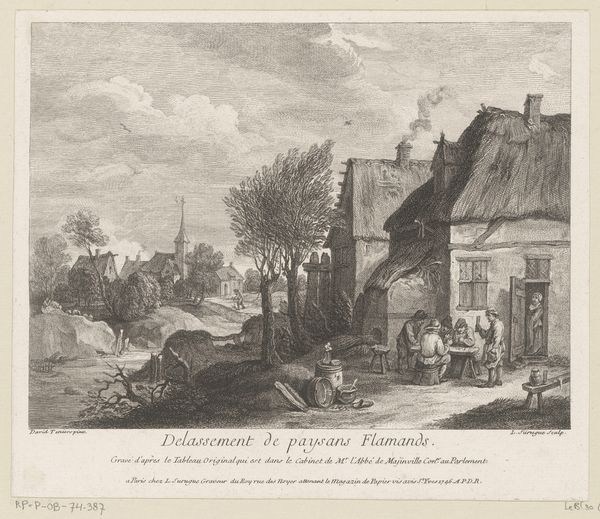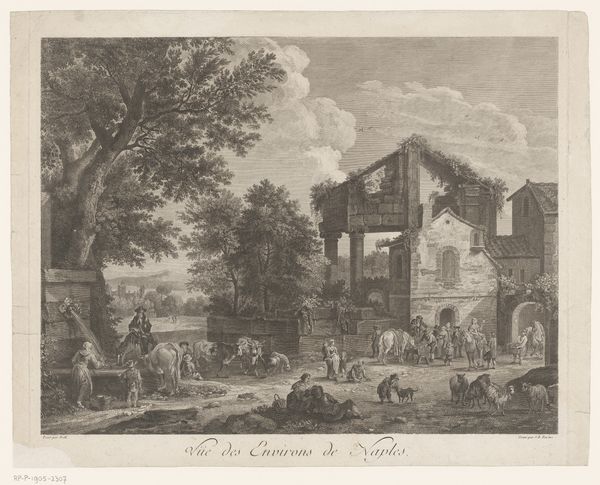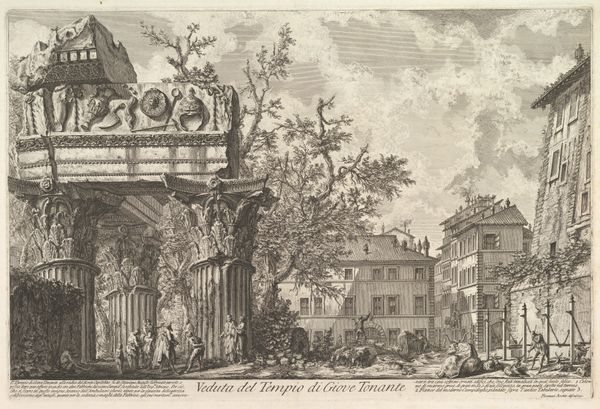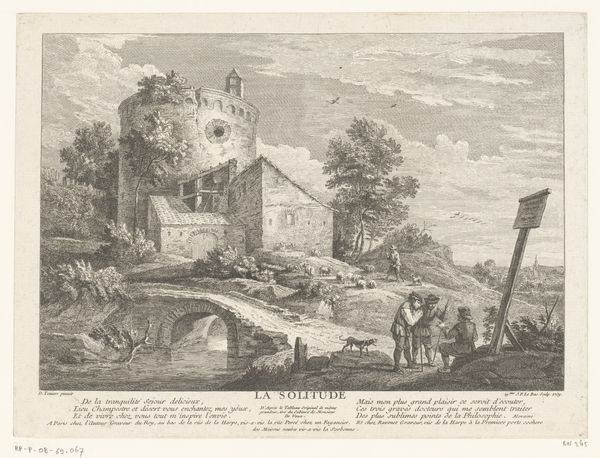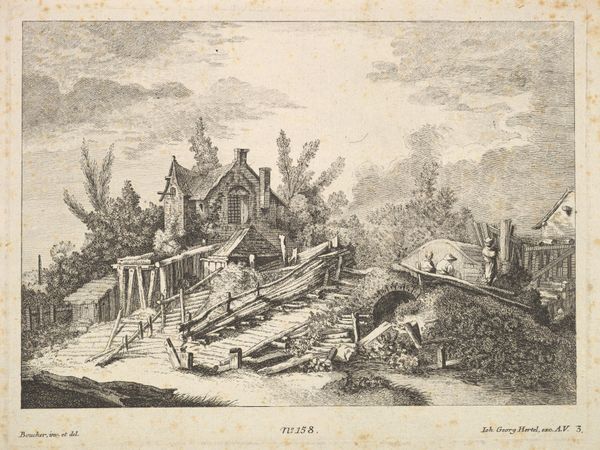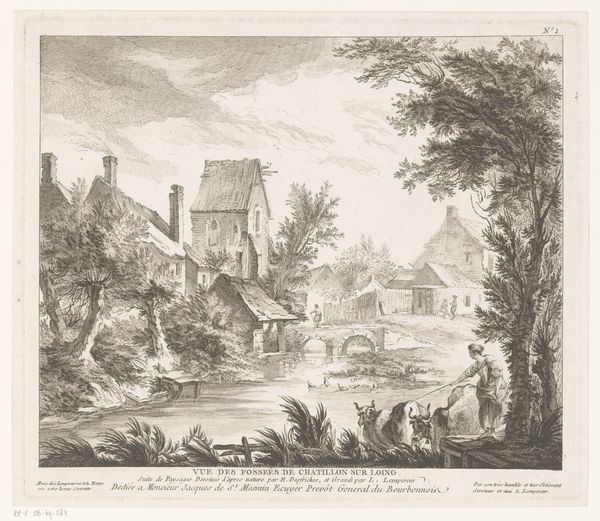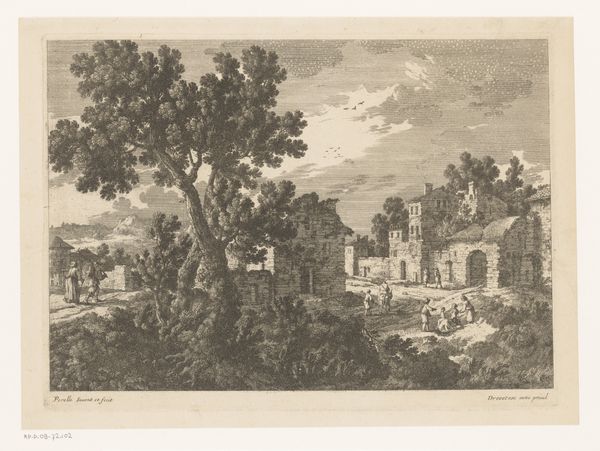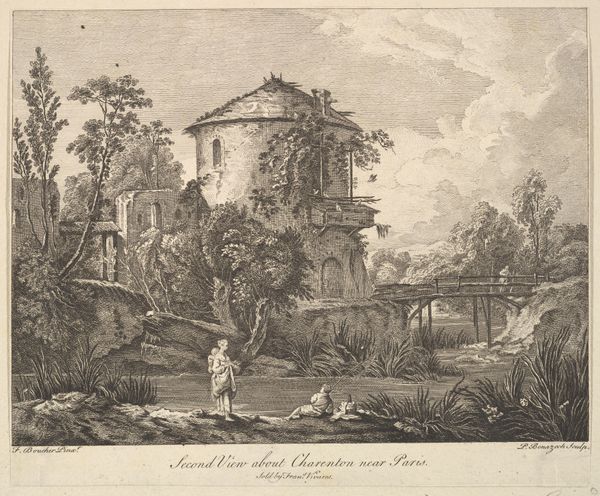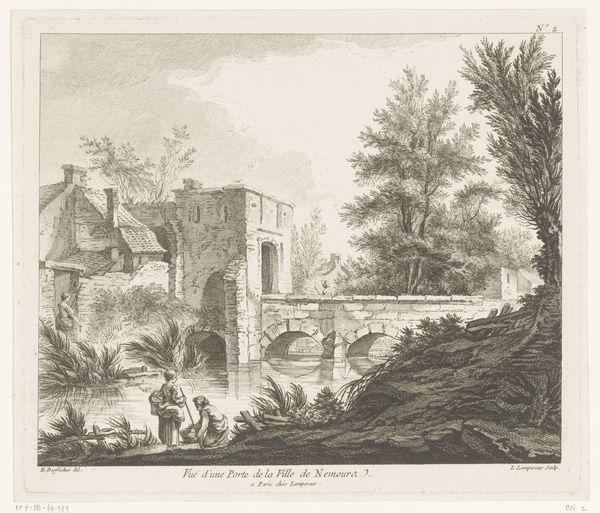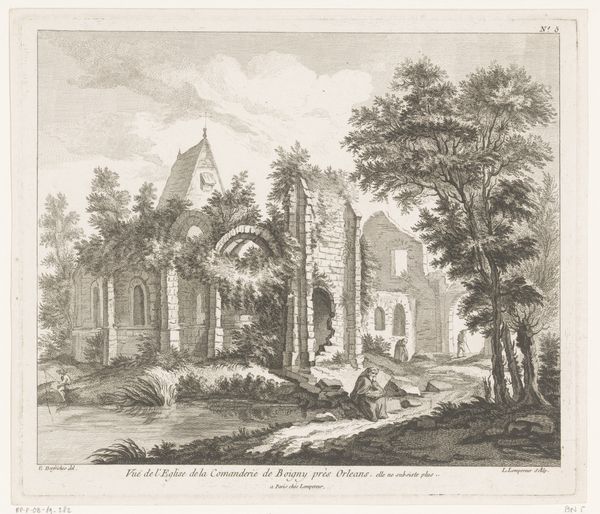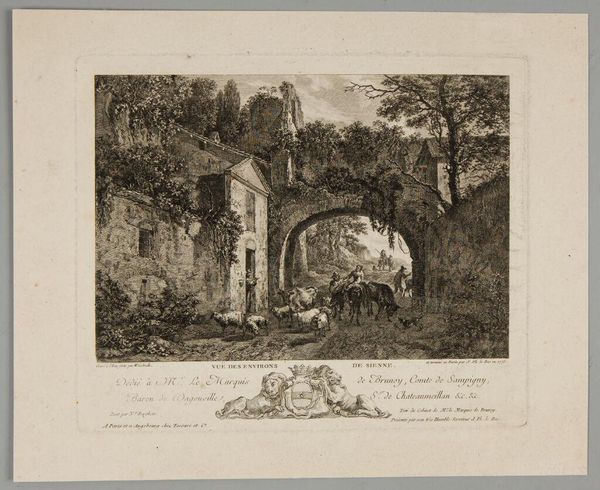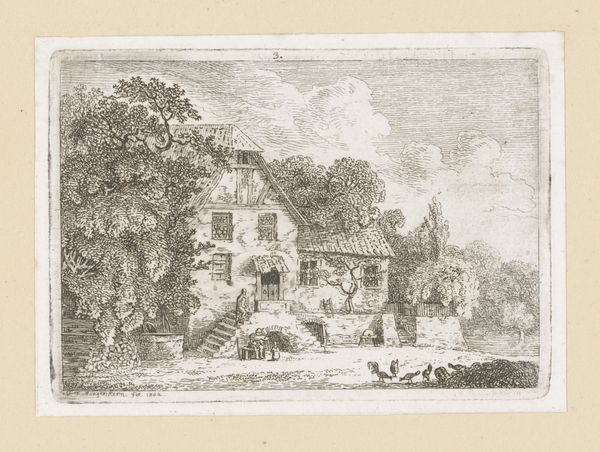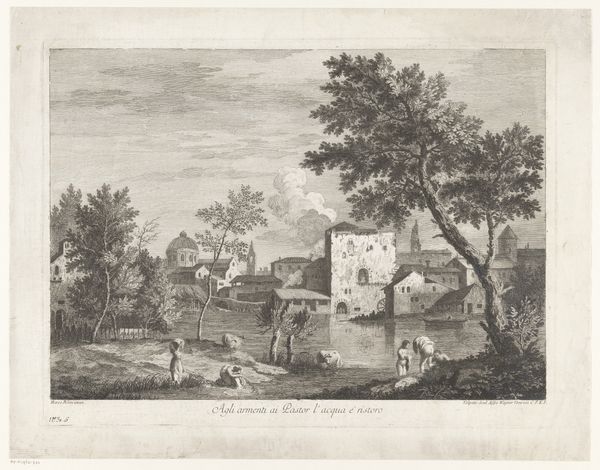
drawing, print, engraving
#
drawing
# print
#
landscape
#
cityscape
#
genre-painting
#
engraving
#
rococo
Dimensions: Sheet (trimmed): 8 1/4 × 9 15/16 in. (21 × 25.3 cm)
Copyright: Public Domain
Curator: Peter Paul Benazech produced this engraving entitled "First View of Charenton near Paris" sometime between 1745 and 1783. Editor: The composition evokes such a peaceful mood. The eye is drawn in by the subtle contrasts, the delicate textures of the foliage, and the way the water reflects the light. Curator: Engravings like these, which often depicted landscapes and genre scenes, were produced using the intaglio process, where the design is incised into a metal plate. The act of engraving, the tools employed, the printing process; it speaks to a culture deeply rooted in craft and material production. It shows the means of its making right on the surface. Editor: Looking closely, you'll see repeated visual motifs. Note the gentle arch of the bridge mirrored in the doorway below, for example. The curves provide an undeniable harmony, an invitation, and the presence of water usually signifies purification or renewal. Curator: Indeed, the landscape, with its emphasis on mills and bridges, represents a kind of mastery over nature, showcasing technological development during that era, transforming the environment for productivity and consumption. What building material was available, how watermills were built-- it all had consequences to that moment in time. Editor: And then there is that solitary woman in the foreground, possibly washing clothes, and beyond, a family of ducks gliding on the water. Such scenes are always pregnant with meaning, suggesting cycles of life, domesticity, perhaps even the harmony of the natural world in contrast to encroaching urban expansion. Curator: I can’t overlook that the scene is very much constructed, an aesthetic vision shaped by specific techniques and socio-economic forces— from the paper it’s printed on, to the networks of trade that distributed the images. All materials and tools for consumption and distribution. Editor: For me, it's also an intimate, timeless slice of life, holding within it shared hopes, dreams and fears of an era. Perhaps we can glimpse something fundamental about ourselves by decoding the symbolism inherent to each carefully etched line and image. Curator: Whether an idealised scene or something grittier reflecting everyday life of laborers, what is depicted always represents selective values, constructed labor. What remains for certain, however, is that all elements signify the materials of a given place and time. Editor: It's astonishing how such seemingly simple images become vessels holding shared memory.
Comments
No comments
Be the first to comment and join the conversation on the ultimate creative platform.
